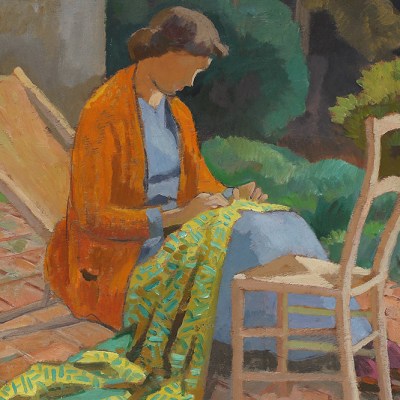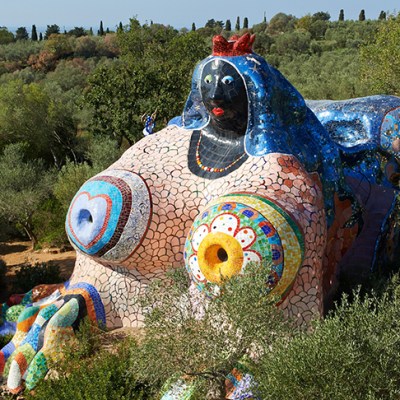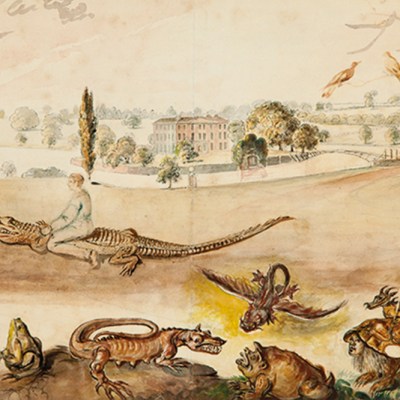Olivia Laing’s latest book, The Garden Against Time: In Search of a Common Paradise, sets the reader an ambitious agenda. Laing asks us to see the garden less as a winsome pastime and more as an unlikely teacher – a powerful model for looking at, sifting through and being in the world – and a place to imagine the world as otherwise.
It was in August 2020, at the height of the pandemic, that Laing moved to the Suffolk home that is the floriferous cornerstone of her book. Its abundant heritage garden had fallen into disrepair but, rather than embark on a wholesale replanting, Laing decided to spend a year waiting and watching to see what had survived. Fig and jasmine, honeysuckle and astrantia, pompom dahlias and a Portland rose rear their glossy heads from starved soil. Each chapter brings a fresh crop of curious nomenclature and luscious similes: gaunt hydrangeas kick up ‘like a chorus line of Giacometti figures’, the boughs of a fastigiate yew ‘stick […] out at rakish angles, like unset bones’.
Olivia Laing’s garden in Suffolk. Photo: © the author

What Laing attributes to the 19th-century pastoral poet John Clare is true of her own prose: her eye roves the natural world with ‘besotted precision’. Laing trained as a herbalist and studied botany, a subject which, she reflects, provided an ‘education in looking’. It’s not hard to see traces of that formation in the book’s descriptions, in which exactitude can be the handmaiden to whimsy: a robinia tree is ‘swagged with candyfloss plumes of blossom’, a rosebay willowherb rises in ‘pink spires’ while the Atlas poppy lists in ‘gaudy drifts’.
But training a gaze on this most intimate of gardens doesn’t shut out the bigger picture. In months spent laying mulch and digging weeds, another landscape takes root in Laing’s mind: ‘I barely thought in conscious terms […] My senses lay open and my thoughts drifted freely, left to their own devices, sluicing more or less inaudibly, sometimes turning up unexpected correspondences or voyaging far back in time.’
These are, of course, the seeds of her book-cum-garden and, true to its title, The Garden Against Time lets loose the clock: Marvell’s ‘green shade’ and Milton’s prelapsarian plenitude are spliced with Morris’s socialist blooms and Jarman’s reparative ones. But the garden – the original word, Laing reminds us, for paradise – has a sinister edge, too. Pristine pleasure grounds at Shrubland Hall rise from the labour of enslaved Africans; the shell-shocked flowerbeds of war-torn Tuscany are cousins to the hardy weeds that ‘mantle […] in gold and imperial purple’ the charred pits of a bombed-out London.
Paradise about to be lost: The Garden of Eden with the Fall of Man (1615), Jan Brueghel the Elder and Peter Paul Rubens. Mauritshuis, The Hague

It’s no surprise that this book’s patron saint is another East Anglian chronicler: W.G. Sebald. In The Rings of Saturn (1995), a walking tour of Suffolk takes Sebald’s narrator through many of the same houses and histories that Laing tracks in her book. Decrepit glamour brings into view centuries of violence and unfathomable loss. What licenses Sebald’s pendulous leaps into disparate histories is the narrator’s own trek. But if Sebald makes a credo of far-flung rambling, Laing’s is confined to her own backyard.
What makes a garden like a book? In both, you can pack lots of things side by side. Laing’s elliptical style squares up easily to the form of a garden: hospitable to unexpected affinity and tightly wound paradox. But if it’s right to regard biodiversity as ecologically salutary, I’m not sure that variousness in a book is an inherent virtue. When Laing writes that ‘A garden is many things at once,’ this is both an asset and an alibi. In The Garden Against Time, competing desires jostle against each other, but the thorny work of connecting them remains unfinished.
The Large Piece of Turf (1503), Albrecht Dürer. Albertina Museum, Vienna

 Taking up the notion of the garden as ‘a container for ideas’ – Laing shows that the garden has long been the battleground of capitalism and its countervisions. Beauty and violence, familiar co-conspirators but uneasy bedfellows, spawn both verdant utopias and florescent nightmares. Of the ‘malign alchemy’ that transformed plantation profits into extravagant shrubbery at estates such as Shrubland, Laing writes that ‘there are gardens that have come at far too high a price, that never should have been built […] Beauty is not a virtue that floats free of cost.’ It’s an entanglement that Laing quickly disavows: ‘Whatever Shrubland was, it wasn’t beautiful.’ It would be more interesting to hold on to that tension. In the garden, the quest for beauty can have poisoned roots, and the aesthetically interesting is not always morally good.
Taking up the notion of the garden as ‘a container for ideas’ – Laing shows that the garden has long been the battleground of capitalism and its countervisions. Beauty and violence, familiar co-conspirators but uneasy bedfellows, spawn both verdant utopias and florescent nightmares. Of the ‘malign alchemy’ that transformed plantation profits into extravagant shrubbery at estates such as Shrubland, Laing writes that ‘there are gardens that have come at far too high a price, that never should have been built […] Beauty is not a virtue that floats free of cost.’ It’s an entanglement that Laing quickly disavows: ‘Whatever Shrubland was, it wasn’t beautiful.’ It would be more interesting to hold on to that tension. In the garden, the quest for beauty can have poisoned roots, and the aesthetically interesting is not always morally good.
At its best, though, and by Laing’s reckoning, the garden is the gentlest kind of sneak attack: a ‘signed affidavit that there are other ways of spending a life’ – ways that raise up such values as curiosity, generosity and cultivation over accumulation, subjection and enclosure. The Garden Against Time is an invitation to these better gardens of our nature: ‘Take it outside,’ Laing urges, ‘and shake the seed.’
The Garden Against Time: In Search of a Common Paradise by Olivia Laing is published by Picador.



